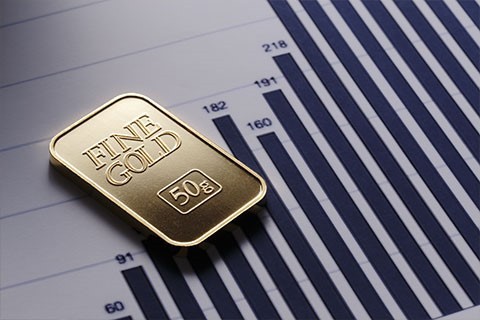The health and economic crisis fueled financial speculation on gold in the first quarter and to a lesser extent encouraged demand for coins, the precious metal taking advantage of its safe haven status.
Listed financial securities (ETFs) indexed to the price of the precious metal attracted “huge flows” in the first quarter of 2020 according to a report by the World Gold Council (CMO) published on Thursday, to reach their peak for four years at 298.0 tonnes.
“This very impressive increase is encouraged by the uncertainty and high volatility on the financial markets,” said CMO spokesperson John Mulligan to AFP.
Gold prices have been trending above $ 1,700 an ounce since April. Apart from a brief incursion in March, this threshold had not been crossed since the end of 2012.
This “performance” attracts investors who at the same time see other asset classes, such as the number of stocks, collapsing.
Demand for gold coins has also risen sharply to a three-year high, by 36% to 76.9 tonnes, boosted in particular by “western investors in search of safe havens,” said the study.
All segments taken into account, total demand for gold rose slightly by 1% to 1,083.8 tonnes.
Kneeling jewelry
As the big loser of the Covid-19 pandemic, demand from the jewelry industry has dropped sharply, by 39% year-on-year, reaching a low in over 13 years, according to the report.
“This is not a surprise given the context in Asia, usually very buoyant in this sector” but hard hit by the health crisis between January and March, adds Mr. Mulligan.
Demand for jewelry in China, the cradle of the pandemic, plunged by 65%, and that in India by 41%. These two countries historically represent half of this market segment.
Industrial demand also stalled to a lesser extent, with a volume decrease of 8% compared to the first quarter of 2019.
The central banks, on the front line for several weeks to defend their currencies, continued to buy gold “in significant quantity”, but at a slower pace than last year at the same time, adds the study.
The Covid-19 pandemic also affected mining, which was not exempt from a drop in activity or even temporary closings in certain producing countries.
The decline in the supply of yellow metal, on the order of 4% over one year, reflects this exceptional situation.
Source Zonebourse
Disclaimer: All articles published here are for information purposes only. They can not in any way influence your investment decision. You are the only ones who can decide the best investment possible for your money, and whatever decision you make, it will carry a risk. The information or data included here may already be overwhelmed by the events, and must be checked from another source, in case you decide to act.


